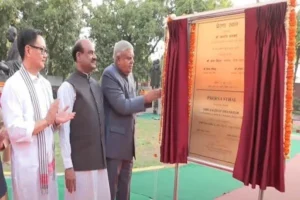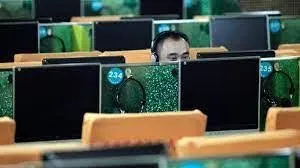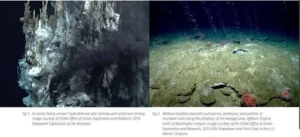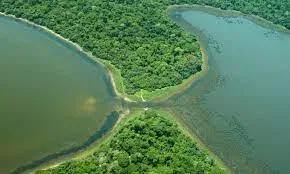UPSC GS 1
Taraknath Das
- News: The birth anniversary of Shri Taraknath Das was recently celebrated.
- Early Life and Background:
-
- Taraknath Das was born in North 24 Parganas, Bengal.
- He emerged as a journalist, teacher, philanthropist, and revolutionary, contributing significantly to the Indian independence movement and fostering international relations.
-

- Revolutionary Activities:
-
- Anushilan Samiti: In 1903, Taraknath Das joined the revolutionary organization Anushilan Samiti, founded by Satish Chandra Bose and Pramath Mitra in Kolkata.
-
- Anti-British Advocacy:
-
- Free Hindustan Newspaper: He launched an anti-British newspaper called ‘Free Hindustan’ in the USA.
-
- Involvement in the Ghadar Movement: In 1913, Das became actively involved with the Ghadar Movement, which aimed at ending British rule in India through revolutionary activities.
- Indo-German Conspiracy: In 1917, he was implicated in the Indo-German conspiracy case, which was a significant event during World War I.
- Taraknath Das Foundation: In 1935, he established the Taraknath Das Foundation to promote educational activities and cultural relations between the US and Asian countries.
Prerna Sthal
- News: Vice President of India Jagdeep Dhankhar recently inaugurated the Prerna Sthal at the Parliament House Complex.
- Location: Prerna Sthal is situated within the Parliament House Complex.
- Statues: The Sthal houses statues of India’s prominent leaders and freedom fighters, which were previously scattered throughout various parts of the Parliament House complex.

- Objective: The initiative aims to enhance the visitor experience by providing easier access to these statues and incorporating modern technology, such as QR codes, to narrate the life stories of these inspiring figures in Indian history.
Read also: Indian Migrants in Gulf Countries: Opportunities and Challenges UPSC
UPSC GS 2
Mitigation Work Programme (MWP)
- News: Many countries expressed their disappointment at the lack of any outcome on the Mitigation Ambition and Implementation Work Programme in mid-year climate talks in Bonn.
- Mitigation Work Programme (MWP):
-
- It is an initiative established by the United Nations Framework Convention on Climate Change (UNFCCC).
-
- Aim:
-
- It aims to assist countries in increasing their mitigation efforts and achieving the 1.5°C target set by the Paris Agreement.
-
- Objectives:
-
- Generate Discussions: Promote innovative conversations among policymakers and stakeholders to overcome barriers to scaling up mitigation actions.
- Inclusive Participation: Ensure diverse involvement to support national processes and create practical domestic policymaking pathways.
- Explore Opportunities: Identify cost-effective and scalable mitigation opportunities to help countries implement and enhance their Nationally Determined Contributions (NDCs).
- Operationalization: Conduct annual global dialogues and investment-focused events from 2023-2026.
- Address Equity and Sustainable Development: Focus on equity, sustainable development, and synergies with adaptation, considering regional approaches.
-
- UNFCCC:
-
- The UNFCCC, established in 1992 during the Earth Summit in Rio de Janeiro, aims to stabilize greenhouse gas concentrations to prevent dangerous climate change. Its goal is to ensure ecosystems can adapt naturally, while sustainable development is maintained.
-
UPSC GS 3
Divya Drishti
- News: A woman-led start-up has developed ‘divya drishti’, a cutting edge aAI tool for personal identification, under technology development fund.
- Overview:
-
- “Divya Drishti” is an AI tool developed by Ingenious Research Solutions Pvt Ltd., founded by Dr. Shivani Verma, a woman entrepreneur.
- This tool integrates face recognition with immutable physiological parameters like gait and skeleton.
- It represents a significant advancement in biometric authentication technology, enhancing accuracy and reliability in identifying individuals.
-
- Features and Applications:
-
- Dual Approach: Combining face recognition with physiological parameters improves identification accuracy, reducing the risks of false positives and identity fraud.
- Versatile Applications: The technology finds applications across various sectors including Defence, Law Enforcement, Corporate, and Public Infrastructure.
-
- Development Support:
-
- Developed under the technical guidance and mentoring of the Centre for Artificial Intelligence & Robotics (CAIR), a DRDO laboratory based in Bangalore.
- CAIR’s involvement underscores its role in advancing cutting-edge AI technologies in India.
-
- Technology Development Fund (TDF)
- Introduction:
-
- The Technology Development Fund (TDF) is a flagship programme of the Ministry of Defence, executed by DRDO under the ‘Make in India’ initiative.
- It aims to support defence and dual-use technology development, fostering capabilities within Indian industries.
-
- Objectives:
-
- Capacity Building: Enhance Indian industries’ capacity and capability for defence technology development.
- R&D Ecosystem: Promote a culture of design and development, creating a robust R&D ecosystem.
- Niche Technology Support: Support niche technology development and prototype creation.
- Aatmanirbharta: Achieve self-reliance (‘Aatmanirbharta’) in defence technology through indigenous innovation and development.
-
- Implementation:
-
- The TDF scheme facilitates financial aid for technology development projects, ensuring advancements in defence technologies are driven by domestic expertise and resources.
-
Digital Firewall
- News: Pakistani media outlets have reported that the country plans to implement a Chinese-style firewall to block users from accessing social media platforms.
- Digital Firewalls in Network Security
-
- A digital firewall is a software-based network security device deployed to monitor and filter network traffic according to predefined security rules.
- Its primary purpose is to prevent unauthorized access to a network by regulating incoming and outgoing traffic.
-

- Deployment and Scope:
-
- Firewalls can be installed on individual devices such as computers or servers, or they can operate at the network level, safeguarding entire networks.
- They are often integrated with other cybersecurity measures like antivirus software to offer comprehensive protection against cyber threats.
-
- Origins and Intended Use:
-
- Originally conceived as a security tool, firewalls are designed to enhance network security by enforcing access control policies and protecting against malicious activities.
-
- Contemporary Issues:
-
- While traditionally intended for security, digital firewalls, especially at a national level like the Great Firewall of China, have gained notoriety for their role in censorship.
- Governments use these complex cybersecurity tools to restrict citizens’ access to certain parts of the Internet, including social media platforms and other websites.
-
- Challenges and Debate:
-
- The use of firewalls for censorship purposes raises significant ethical and human rights concerns, as it can limit freedom of information and expression.
- Despite their dual roles in security and censorship, firewalls remain essential tools in safeguarding networks and preventing cyberattacks.
-
JIMEX- 2024
- News: Japan-India maritime exercise (Jimex 24) commenced at Yokosuka in Japan.
- Overview:
-
- JIMEX-2024 marks the eighth edition of the Japan-India Maritime Exercise (JIMEX) since its inception in 2012.
- The exercise consists of harbour and sea phases, fostering professional, sports, and social interactions between the participating navies.
-
- Participants:
-
- The Indian Navy is represented by the indigenous Stealth Frigate INS Shivalik.
- Japan is represented by the Guided Missile Destroyer JS Yugiri.
-
- Objectives:
-
- Enhance war-fighting capabilities and interoperability between the navies of India and Japan through joint exercises at sea.
- Provide a platform for sharing best practices and conducting operational interactions.
-
- Strategic Importance:
-
- JIMEX reaffirms the shared commitment of India and Japan towards maritime security in the Indo-Pacific region, promoting stability and peace.
-
- Other Exercises between India and Japan:
- Malabar Exercise:
-
-
- A quadrilateral naval exercise involving India, Japan, the United States, and Australia. It focuses on naval war gaming and enhancing maritime cooperation.
-
- SHINYUU Maitri:
-
-
- A bilateral air force exercise between India and Japan, aimed at promoting interoperability and cooperation in the domain of air operations.
-
- Dharma Guardian:
-
- A bilateral military exercise focusing on enhancing cooperation and coordination between the armies of India and Japan, particularly in counter-terrorism and disaster relief operations.
See more: Frequent Rail Accidents in India: Causes and Mitigation | UPSC
Hawkish Economic Policy
- News: The era of relaxed monetary policy that boosted emerging-market bonds is ending as central banks in developing countries adopt stricter monetary stances.
- Definition: Hawkish economic policy refers to a stance adopted by central banks or policymakers that prioritizes controlling inflation over other economic objectives like full employment or economic growth.
- Characteristics:
-
- Higher Interest Rates:
- Hawkish policymakers advocate for raising interest rates to make borrowing more expensive.
- This aims to curb spending and investment, thereby cooling down an overheating economy.
- Tightened Monetary Policy:
- Measures are implemented to reduce the money supply growth rate.
- This tightening helps in controlling inflationary pressures within the economy.
- Inflation Targeting:
- There is a strong emphasis on maintaining low inflation levels.
- Policymakers often set explicit inflation targets and take proactive measures to ensure these targets are achieved.
- Reduction of Economic Stimulus:
- Hawkish policies involve scaling back on fiscal or monetary stimulus efforts that could potentially fuel inflation.
- This may include reducing government spending or gradually phasing out quantitative easing programs.
- Contrast with Dovish Economic Policy:
- Hawkish economic policy contrasts with dovish policy, which prioritizes stimulating economic growth and reducing unemployment, sometimes at the expense of higher inflation tolerances.
-
Matsyayaan -6000
- News: India is set to be the 6th country to have its own Deep Sea Mission. India’s Matsyayaan 6000 can go 6000m deep into the Ocean.
- More on News:
-
- India is set to be the 6th country of the world to have its own Deep Sea Mission.
- The other 5 countries are- France, the US, China, Russia and Japan.
-
- Matsyayaan 6000:
-
- The Matsya 6000 is a three-person submersible capable of descending 6,000 meters under the sea.
- It is being developed by the National Institute of Ocean Technology (NIOT) in Chennai.
-
- Technical Specifications
-
- Structure: 2.1-meter diameter sphere.
- Material: Made of 80mm-thick titanium alloy.
- Pressure Resistance: Can withstand pressure 600 times greater than that at sea level.
- Operating Duration: Can operate from 12 to 16 hours continuously.
- Oxygen Supply: Equipped with a 96-hour oxygen supply.
-
- Advanced Features:
-
- Ultra-Short Baseline Acoustic Positioning System (USBL): Allows communication between the mothership and the submersible. Enables the mothership to track the submersible’s location.
-
- Primary Focus:
-
- Chemosynthetic Biodiversity: Matsya 6,000 will look at chemosynthetic biodiversity in hydrothermal vents and low-temperature methane seeps in the ocean.
- Assessment of marine biodiversity.
- Promotes tourism.
- Enhances ocean literacy.
-
- What is Chemosynthetic Biodiversity?
-
- Some organisms gain their energy from chemicals as opposed to sunlight.
- In chemosynthetic ecosystems, microbes use chemical energy to create biomass which in turn feeds animals.
-

-
-
- Examples of chemosynthetic ecosystems are hydrothermal vents and methane seeps , both of which contribute significantly to the function and health of our ocean.
-
Exercise Red Flag 2024
- News: An Indian Air Force (IAF) contingent participated in Exercise Red Flag 2024, conducted at Eielson Air Force Base, Alaska, from June 4 to June 14, 2024.
- About Exercise Red Flag 2024
- Frequency: The second edition of Exercise Red Flag 2024, an advanced aerial combat training exercise held four times a year by the US Air Force.
- Participants:
-
- Indian Air Force (IAF)
- Republic of Singapore Air Force (RSAF)
- Royal Air Force (RAF) of the United Kingdom
- Royal Netherlands Air Force (RNLAF)
- German Luftwaffe
- United States Air Force (USAF)
-

- Nature of Exercise: Red Flag is an air combat exercise featuring realistic combat scenarios.
- Forces Involved:
-
- Red Force: Simulating Air Defence, primarily using the USAF Aggressor Squadron’s F-16 and F-15 aircraft.
- Blue Force: Simulating Offensive Composite elements.
-
- Highlights:
-
- This year marked the debut of the Indian Air Force’s Rafale aircraft in the exercise.
- The Rafale operated alongside RSAF and USAF F-16s, F-15s, and A-10s.
- Missions included Beyond Visual Range combat exercises in Large Force Engagements, focusing on Offensive Counter Air and Air Defence roles.
-
Energy Progress Report 2024
- News: Tracking SDG7: The Energy Progress Report 2024n has been released.
- Energy Progress Report 2024:
-
- Since its inception in 2018, the annual report has become the global reference for tracking progress toward Sustainable
- Development Goal 7 (SDG 7) of the UN 2030 Agenda for Sustainable Development. SDG 7 aims to “ensure access to affordable, reliable, sustainable, and modern energy for all.”
-
- Custodian Agencies: The report is produced annually by five custodian agencies responsible for monitoring progress toward SDG 7:
-
- International Energy Agency (IEA)
- International Renewable Energy Agency (IRENA)
- United Nations Statistics Division (UNSD)
- World Bank
- World Health Organization (WHO)
-
- Report Summary: The report summarizes global progress on:
-
- Energy access
- Energy efficiency
- Renewable energy
- Clean cooking
- International cooperation to advance SDG 7
-
- Highlights of 2024 Report:
-
- Electricity Access: For the first time in over a decade, the number of people without access to electricity increased, largely due to population growth outpacing new electricity connections.
- In 2022, 685 million people were without electricity, 10 million more than in 2021, primarily in Sub-Saharan Africa.
- Clean Cooking: The world is off track to achieve universal access to clean cooking by 2030. 2.1 billion people still lack access to clean cooking fuels and technologies, mainly in Sub-Saharan Africa and Asia.
- Renewable Energy: Renewable electricity consumption grew by over 6% year-on-year in 2021, with renewables making up 28.2% of global electricity consumption.
- In 2022, installed renewable energy-generating capacity per capita reached a record high of 424 watts globally.
- Disparities exist between developed (1,073 watts per capita) and developing countries (293 watts per capita).
-
- Challenges:
-
- Current efforts are insufficient to achieve SDG 7 on time.
-
- Progress in India:
-
- Renewable Energy Advancements: Between 2010 and 2021, India, along with China and Indonesia, made significant advancements in modern renewable energy use.
- India’s share of renewables in total final energy consumption (TFEC) increased by nearly 7 percentage points.
- International Support: India’s transition to renewable energy has been supported by substantial international financial aid.
- In 2022, India received USD 627 million for 47 renewable energy projects, many valued at less than USD 1 million.
- Significant funding came from Germany and the International Bank for Reconstruction and Development (IBRD).
- Transportation Sector: India, alongside the United States, Brazil, Europe, and China, accounts for 85% of renewable energy use in the transportation sector.
-
Palamu Tiger Reserve
- News: To retain the four tigers which have migrated to Palamu Tiger Reserve (PTR), efforts are underway to relocate at least two tigresses and one tiger from another reserve.
- Overview of Palamu Tiger Reserve (PTR):
-
- Located in the Chhota Nagpur plateau region of Jharkhand, the Palamu Tiger Reserve (PTR) is an integral part of the Betla National Park.
- It is notable for being one of the first nine tiger reserves established in India at the inception of ‘Project Tiger’.
-
- Historical Significance:
-
- PTR holds the distinction of being the first reserve in the world where a tiger census was conducted using the pugmark count method, supervised by J.W. Nicholson in 1932.
-
- Geography and Geology:
-
- Terrain: The reserve features an undulating landscape with valleys, hills, and plains.
- Rivers: Three rivers flow through the reserve – North Koel, Auranga, and Burha.
- Geological Composition: The geological formation consists of gneiss and includes granite and limestone.
- Mineral Richness: The reserve is rich in minerals such as bauxite and coal.
-
- Vegetation:
-
- Dominant Forest Type: Northern Tropical Dry Deciduous forests, primarily Sal Forest and its associates.
- Other Forest Types: Smaller patches of Northern Tropical Moist Deciduous forests are also present.
-
- Flora: Notable species include Shorea robusta, Acacia catechu, Madhuca indica, Terminalia tomentosa, Butea monosperma, Pterocarpus marsupium, Anogeisus latifolia, and Indigofera pulchela.
- Fauna: Tiger, Asiatic Elephant and Leopard, Grey wolf, Wild dog, Gaur, Sloth bear and four horned antelope etc.
Aedes Albopictus Mosquito
- News: Due to warmer conditions, the Aedes albopictus mosquito is spreading in Europe.
- Overview:The Aedes albopictus mosquito or the Asian tiger mosquito, is a highly invasive species recognizable by its distinctive black and white striped appearance.
- Disease Vector: The Asian tiger mosquito is a known vector for several serious diseases, including:
-
- Dengue fever
- Chikungunya
- Zika virus
- Yellow fever
-
Pantanal Wetland
- News: Fires in Brazil’s Pantanal wetlands have surged nearly tenfold so far this year to the highest levels since 2020.
- Overview of the Pantanal: The Pantanal is the world’s largest tropical wetland, covering approximately 185,000
- Geographical Position: Located in the upper Paraguay River basin, the Pantanal spans across Brazil’s borders with Bolivia and Paraguay.

- Extent in Brazil: About 80% of the Pantanal lies within Brazil.
- Landscape: The Pantanal is a mosaic of grassland swamps, dense low-forested savannas, and seasonal floodplains, all nourished by rivers, streams, and seasonal floods.
- Formation: It developed in a structural basin formed during the rise of the Andes Mountains.
- Climate: The region experiences a tropical climate with distinct wet and dry seasons.
- Species Richness: It is one of the most biologically diverse environments on Earth, home to over 4,700 plant and animal species.
- Mammals: Jaguar, giant otter, giant armadillo, marsh deer, and pampas deer.
- Birds: Hyacinth macaw, the largest parrot in the world.
- Reptiles: The Pantanal has the highest concentration of crocodiles in the world, with around 10 million caimans.
- Conservation Status:
-
- UNESCO World Heritage Site: In 2000, UNESCO designated a small portion of the Pantanal as a World Heritage Site due to its ecological significance.
- Private Ownership: Approximately 95% of the Pantanal is privately owned, predominantly used for cattle grazing.
-
Tarang Shakti Exercise 2024
- News: India will host its first multinational air exercise Tarang Shakti in August 2024.
- Total Participants: Ten countries will participate in the exercise, with a few additional countries acting as observers.
- Participating Countries: Australia, France, Germany, Japan, Spain, the United Arab Emirates, the United Kingdom, and the United States.
- Germany’s Contribution: Germany will deploy fighter jets and an A-400M transport aircraft.
- Objectives: The exercise aims to engage friendly foreign countries with which the IAF interacts regularly and has established a degree of interoperability.
- Exercise Details:
-
- Phases: The exercise will be conducted in two phases.
- First Phase: Scheduled for the first two weeks of August in southern India.
- Second Phase: Scheduled from late August to mid-September in the western sector.
- Participation: Some countries will take part in both phases, while others will join only one phase.
-
Burp Tax
- News: New Zealand’s centre-right government announced that it will scrap the ‘burp tax’.
- Introduction: The Burp Tax was introduced in 2022 by New Zealand to target greenhouse gas emissions from livestock, specifically methane emissions.
- Methane Emissions: Methane, a potent greenhouse gas, is released by ruminant animals like cows and sheep, mainly through burping.
- Aim: The primary goal of the tax was to reduce methane emissions from ruminant species to address environmental concerns.
- Why Was the Burp Tax Introduced?
-
- Environmental Concerns: Methane is responsible for 30% of global warming since preindustrial times, second only to carbon dioxide.
- Animals such as cows, sheep, goats, and buffaloes produce methane during digestion, which contributes significantly to greenhouse gas emissions.
-

